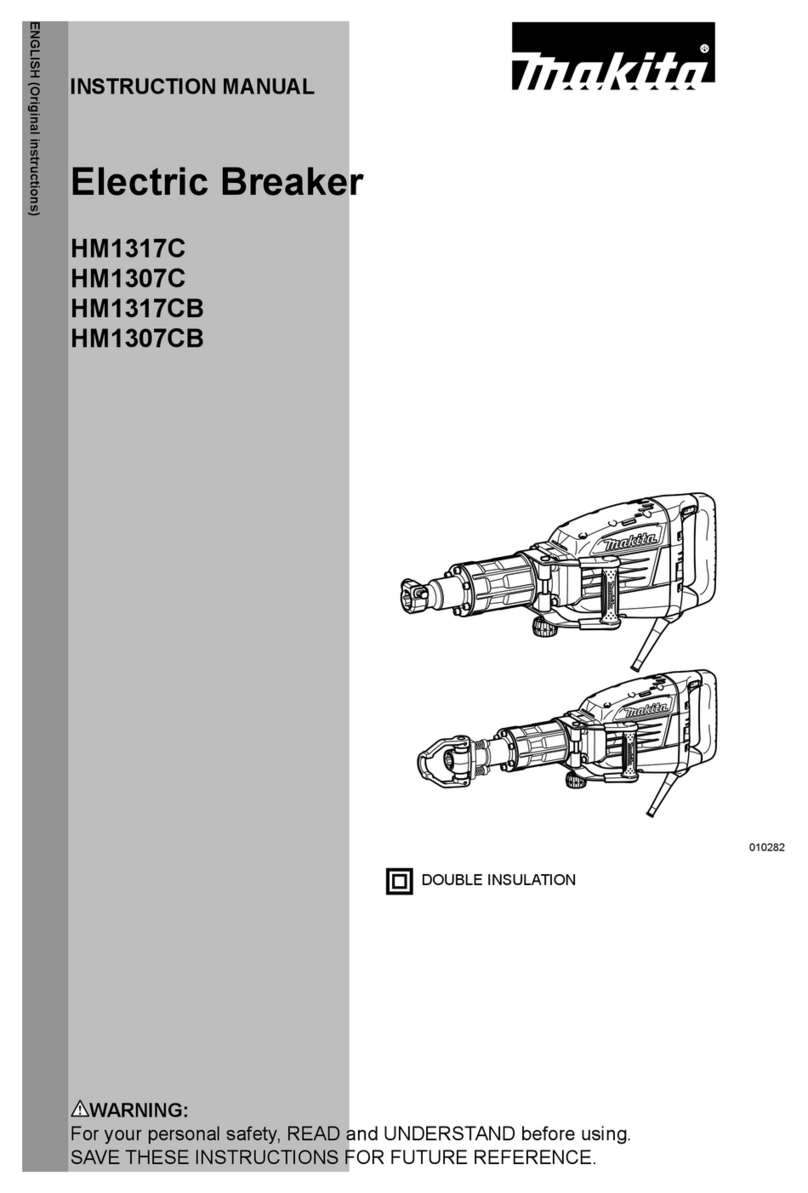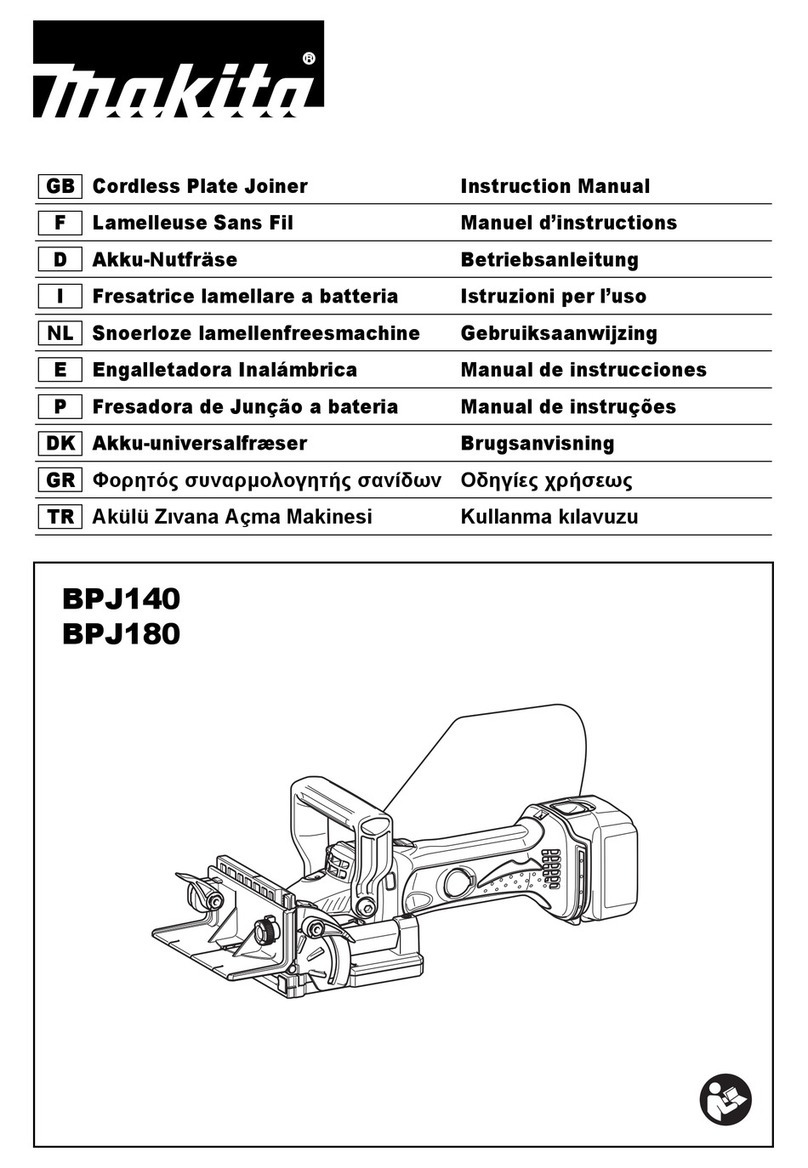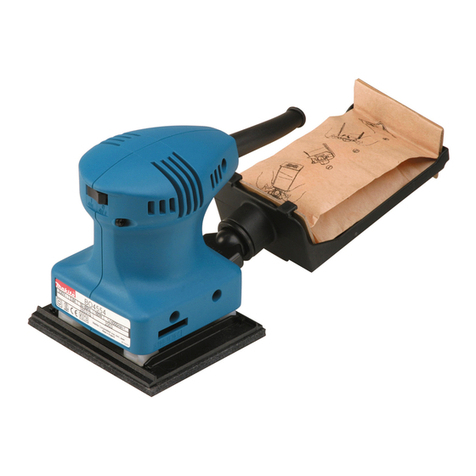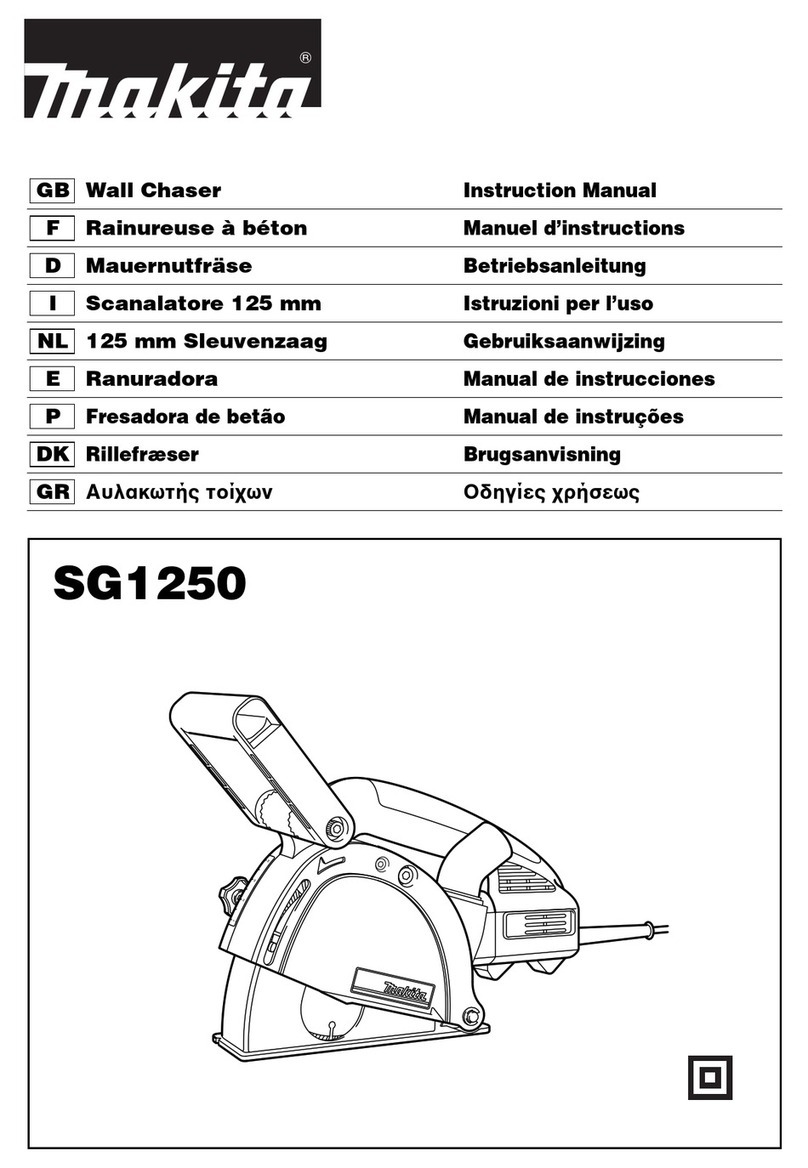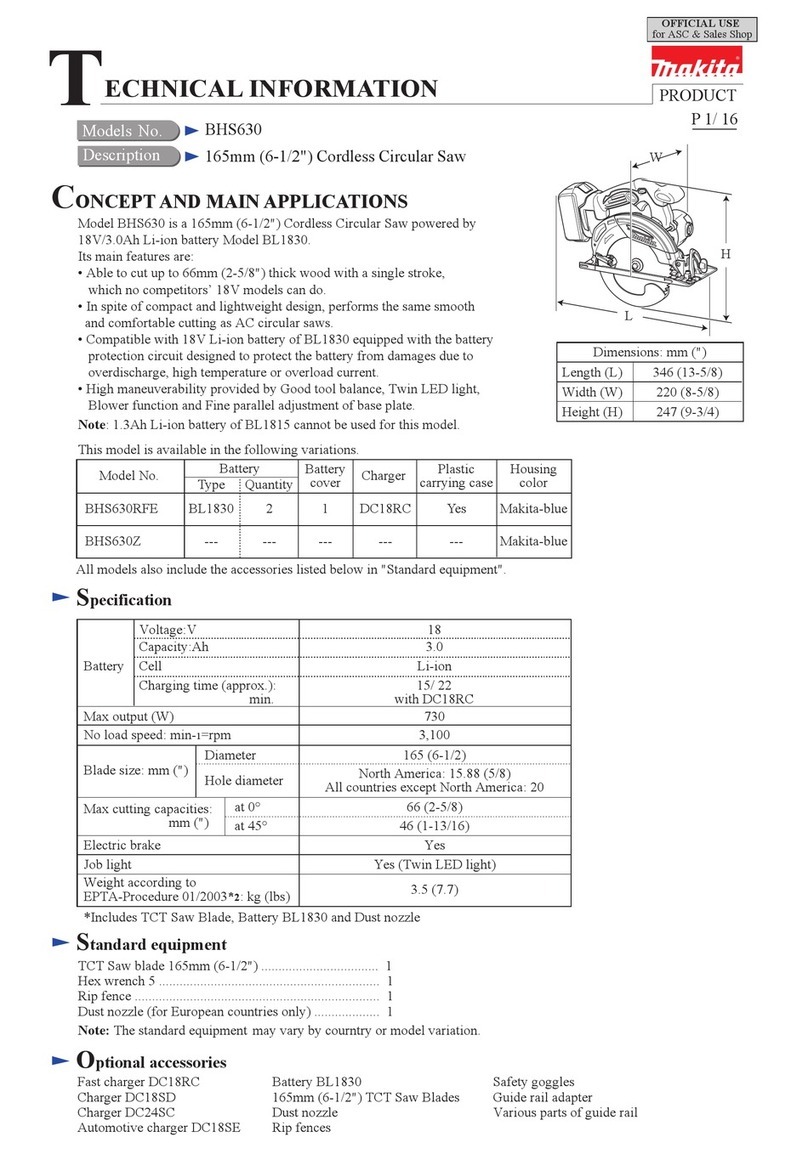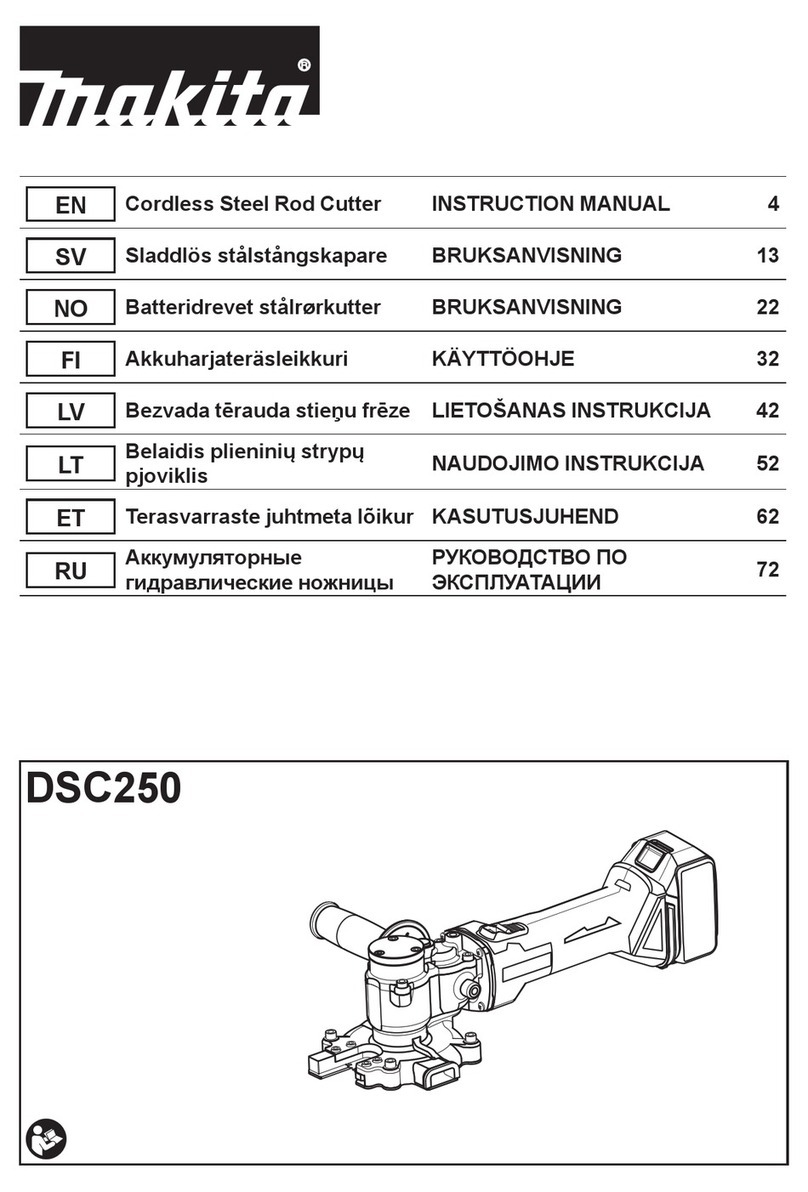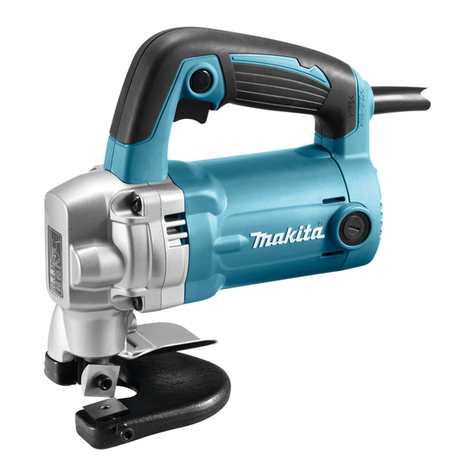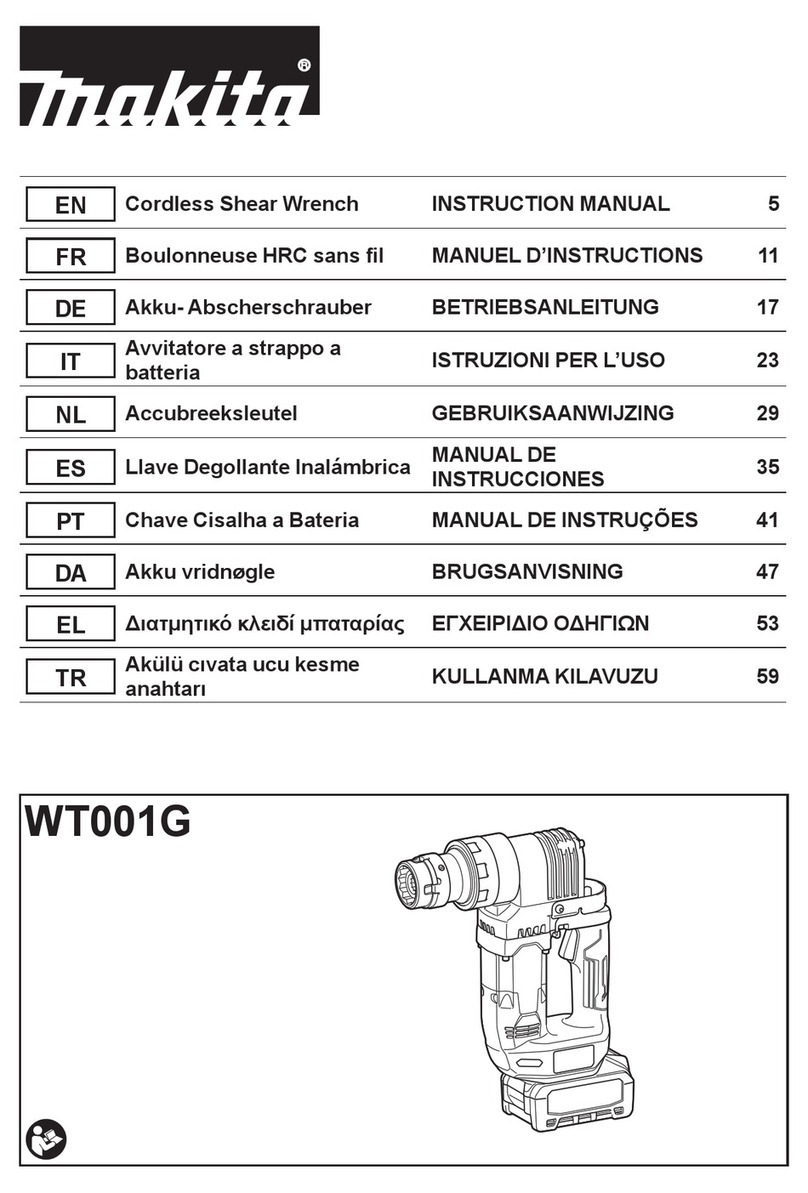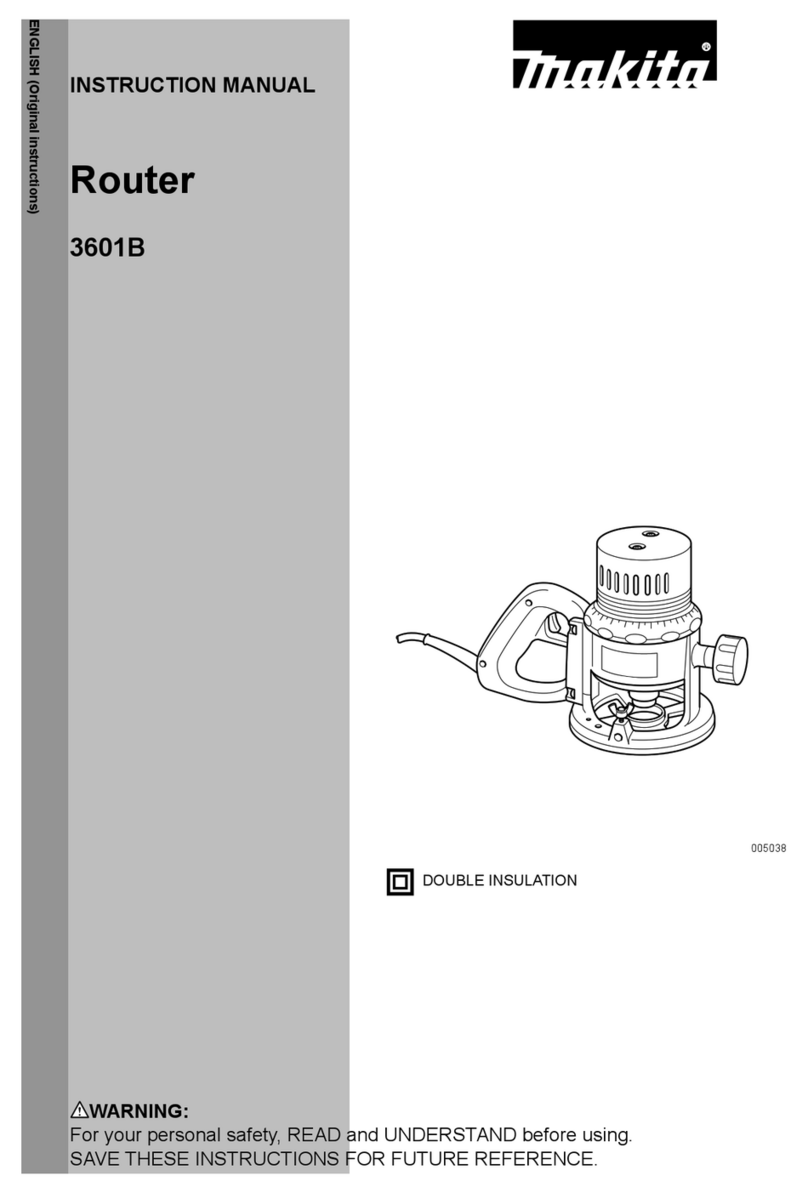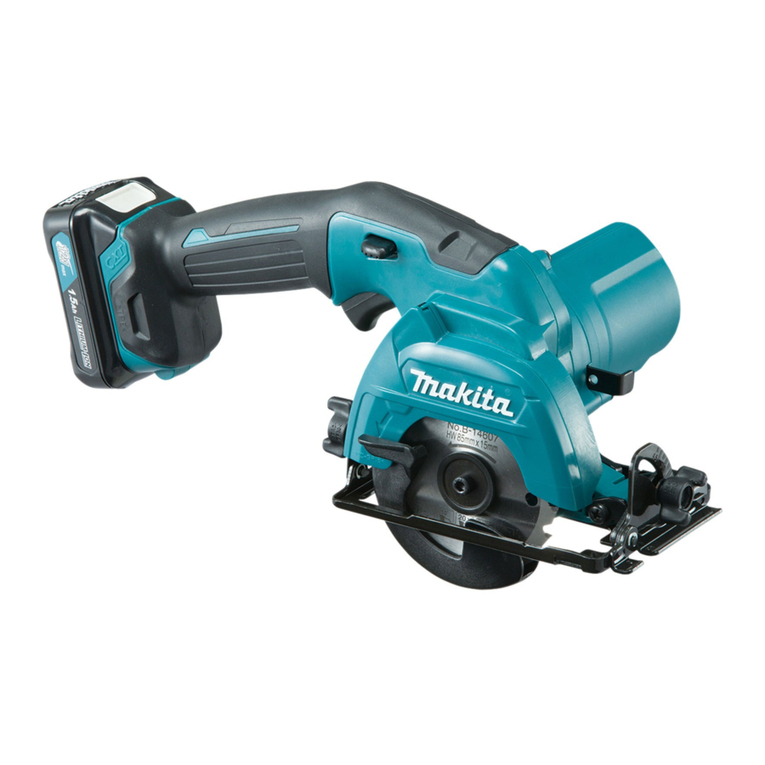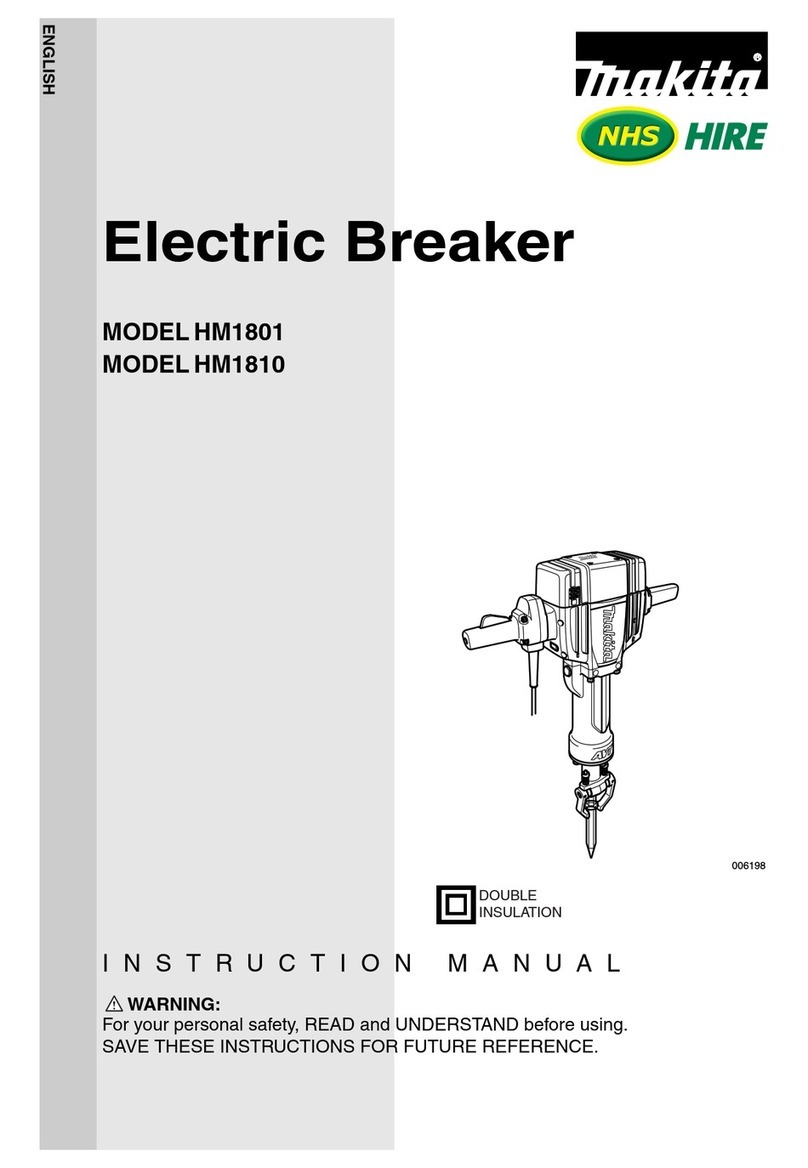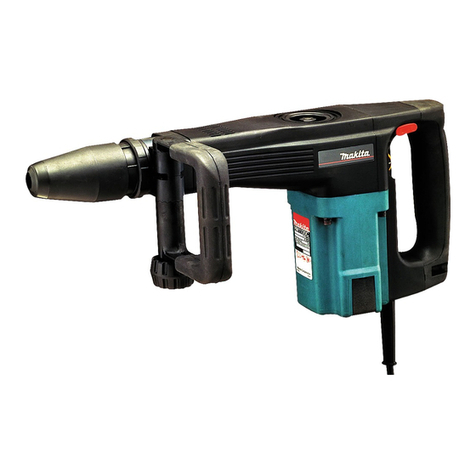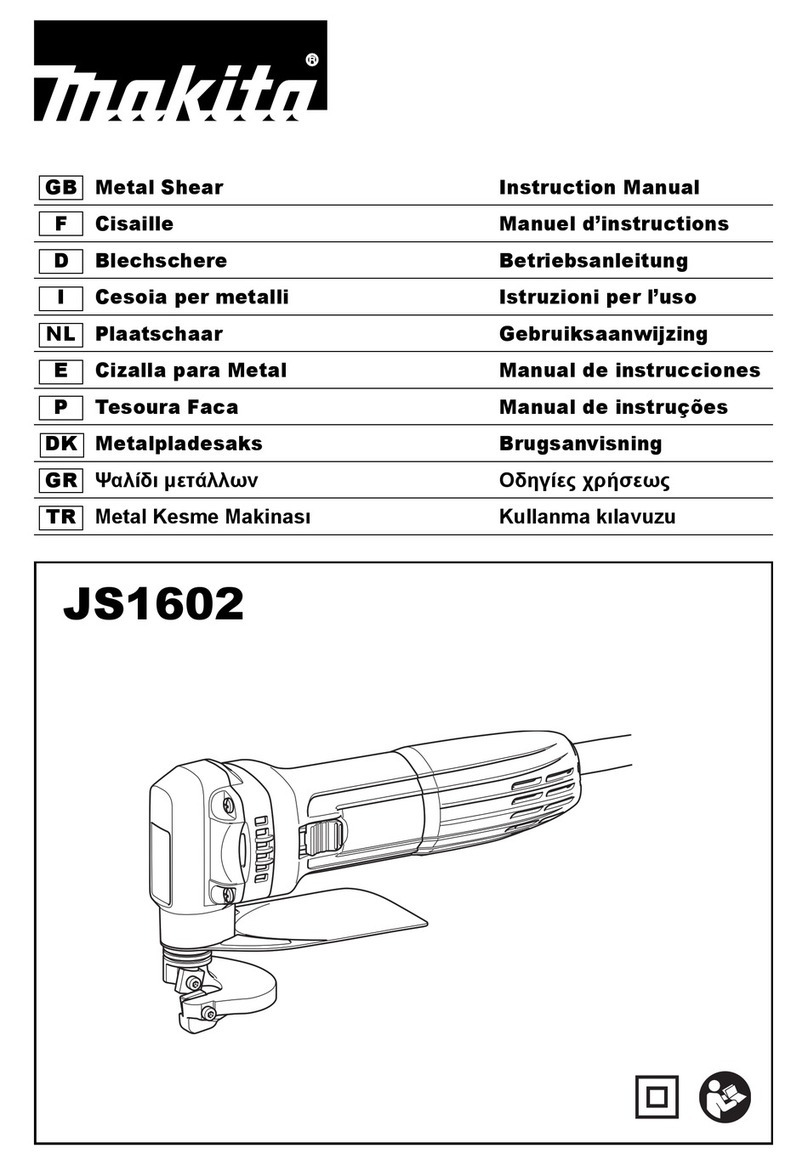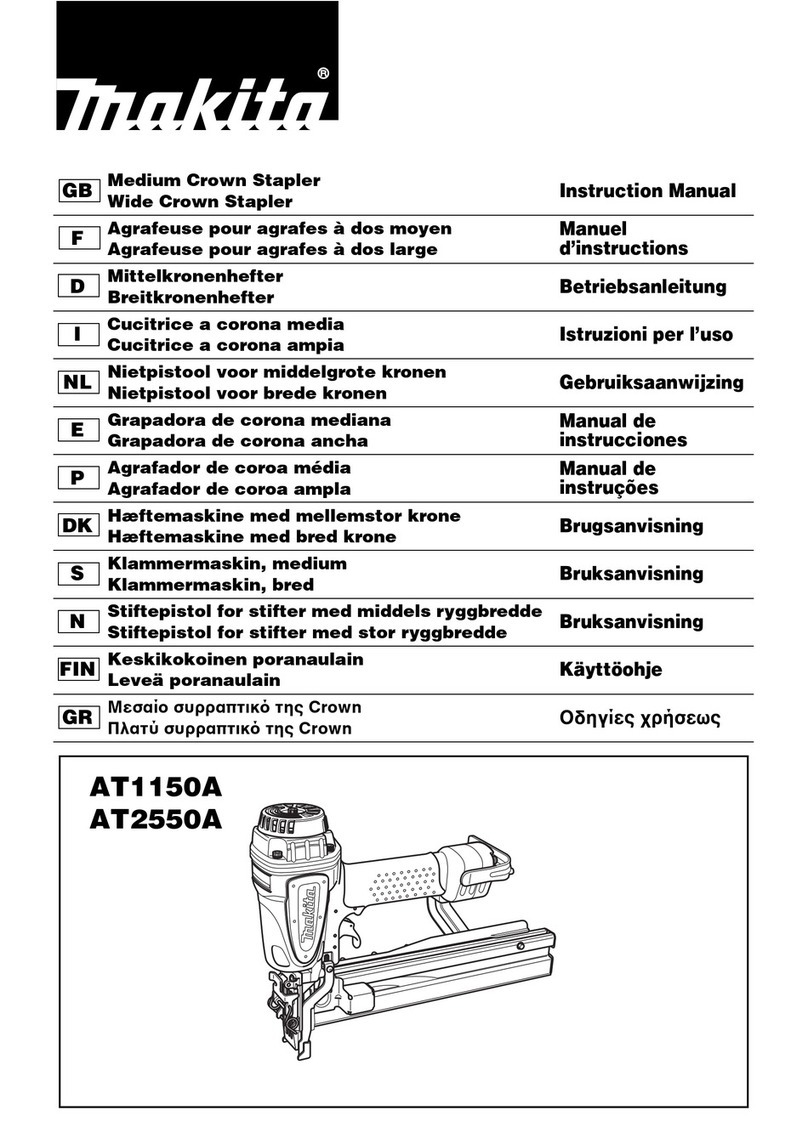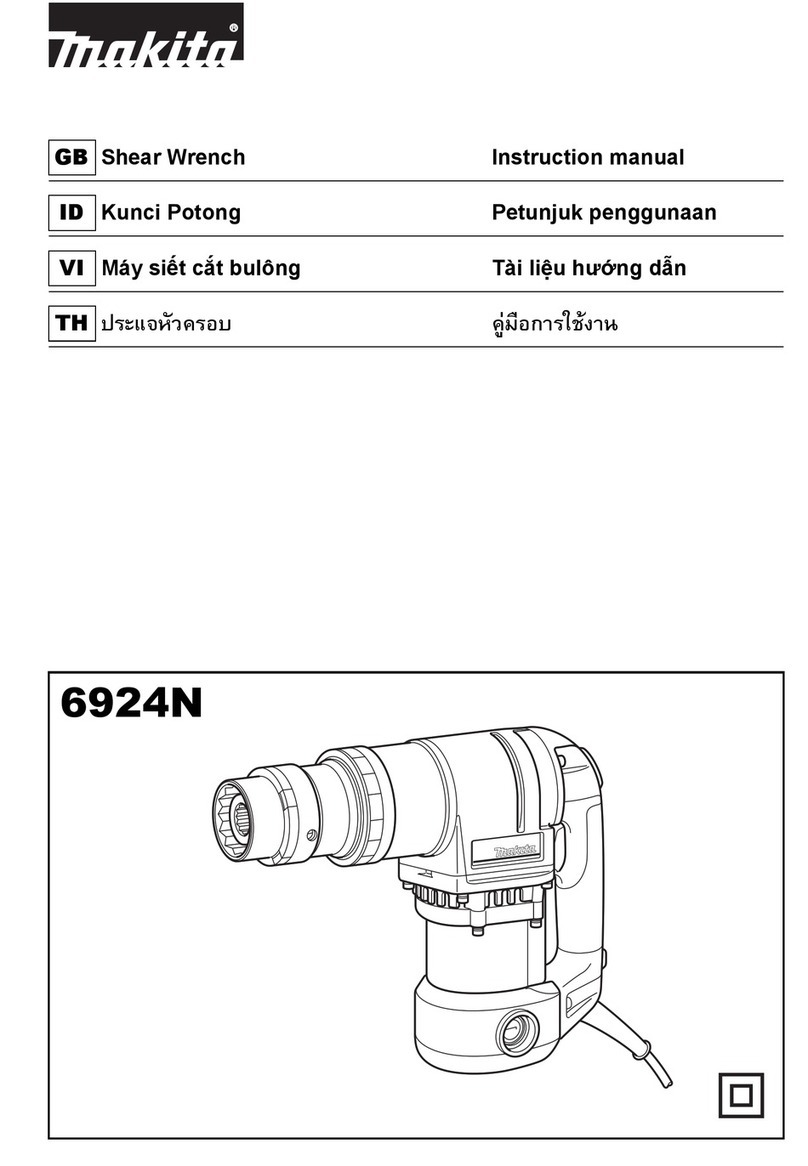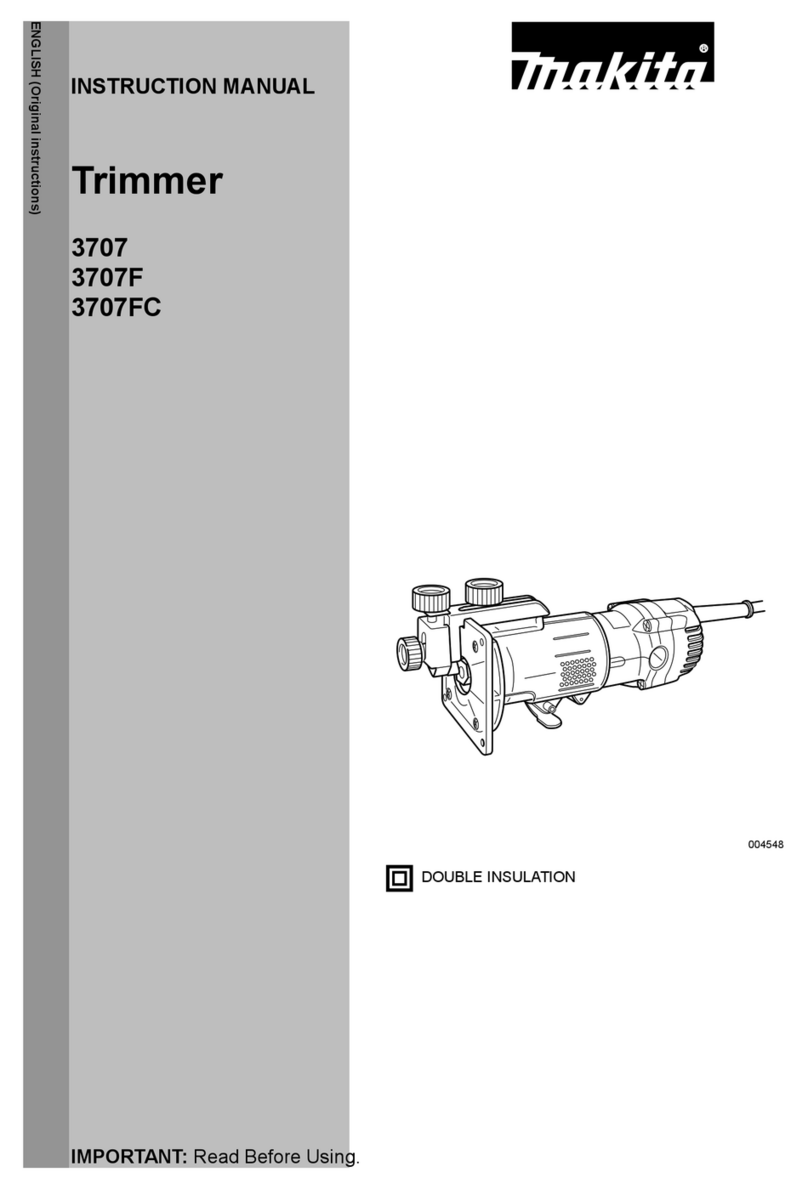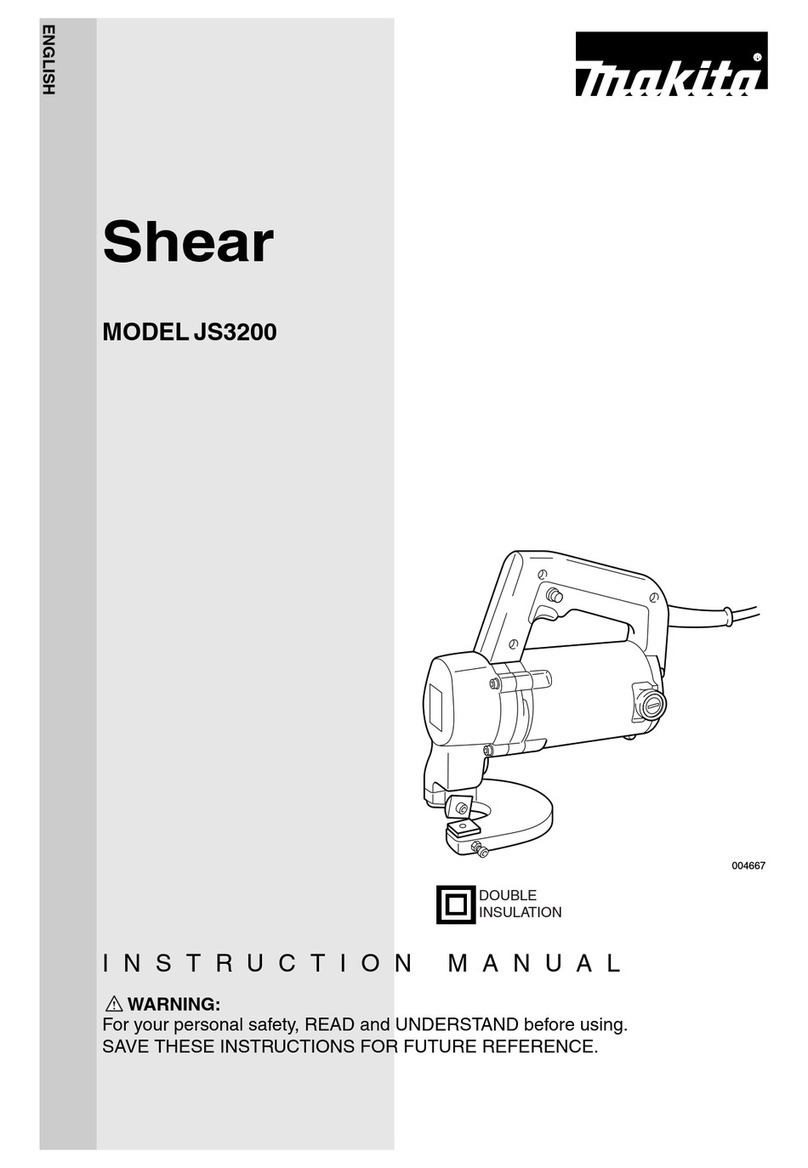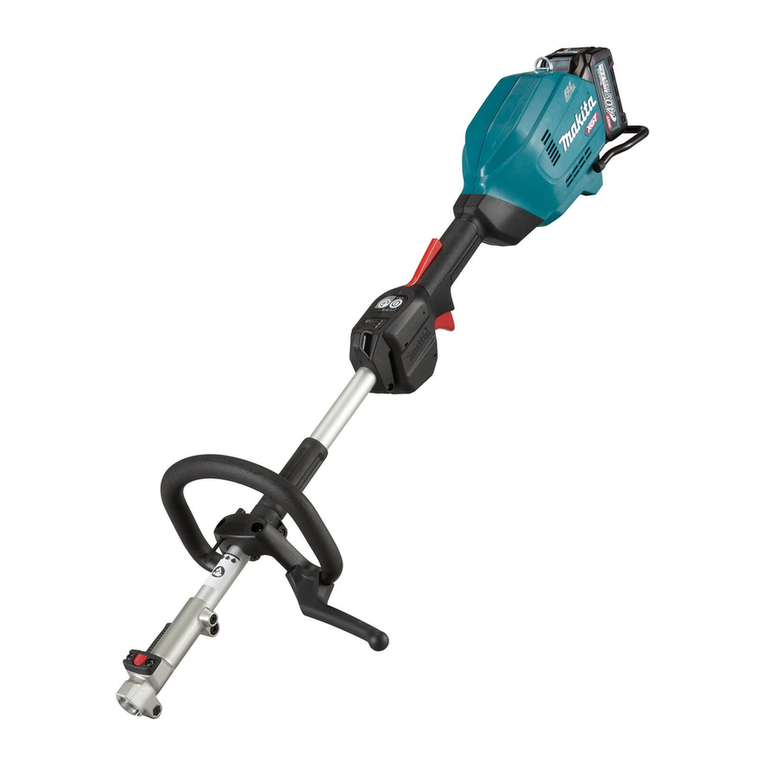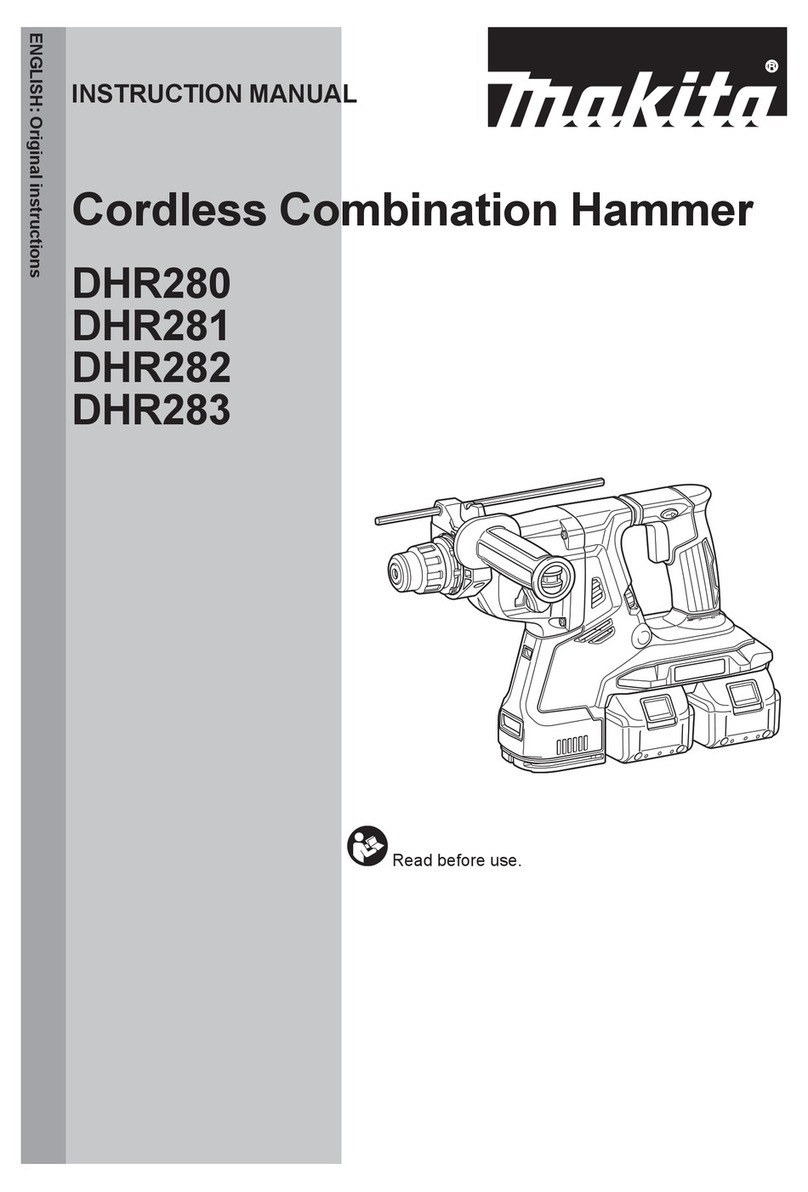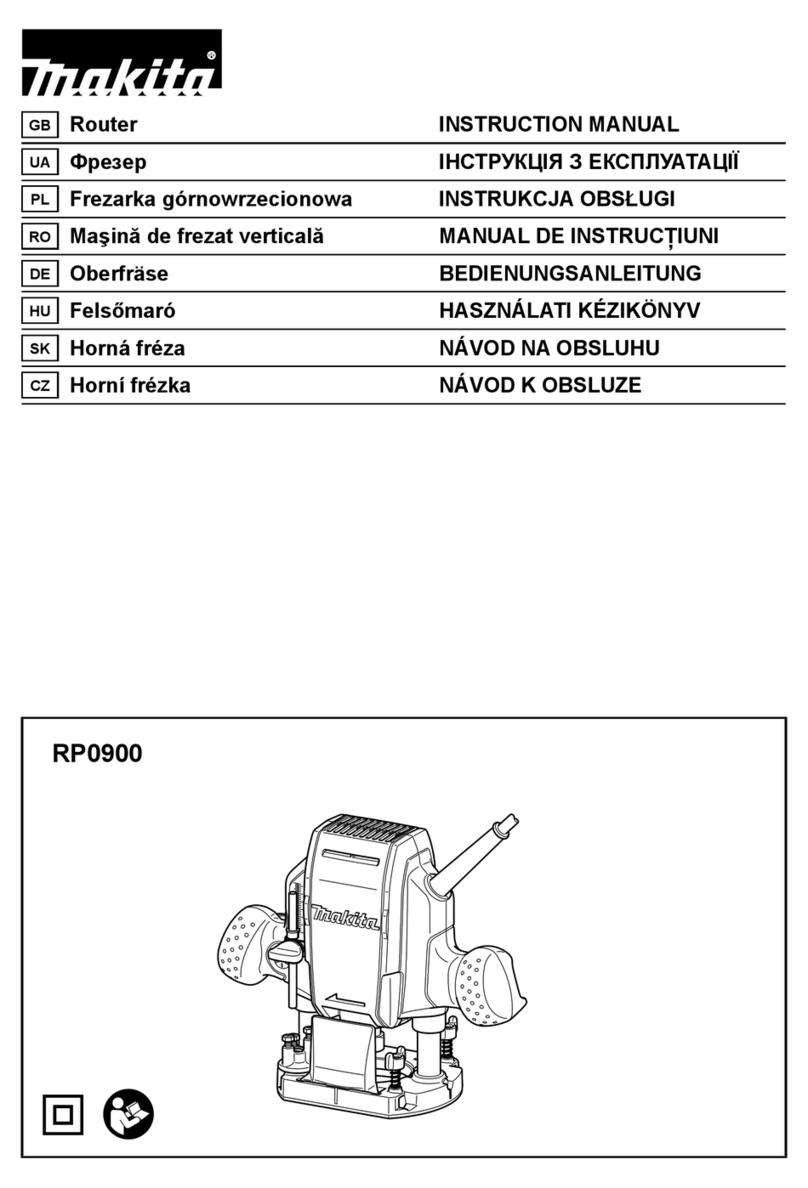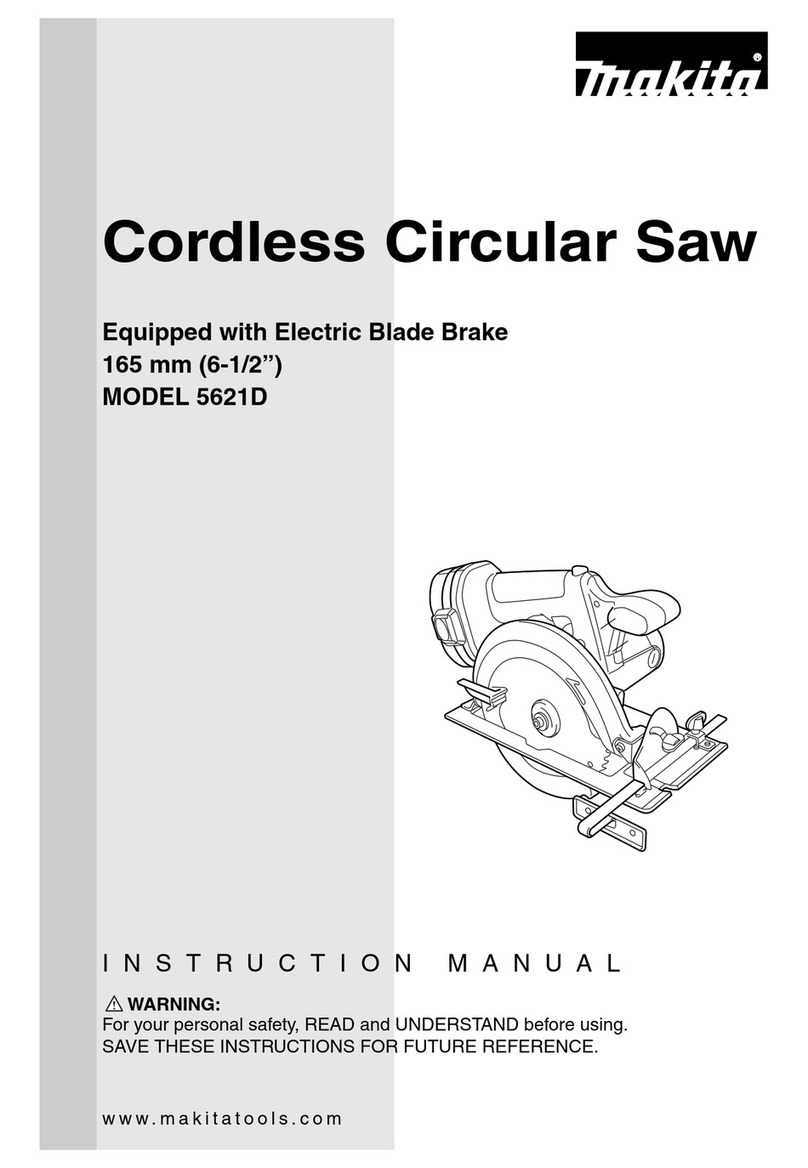
7
b l nce, vibr te excessively nd m y c use loss of
control.
8. Do not use damaged wheels. Before each use,
inspect the wheels for chips and cracks. If power
tool or wheel is dropped, inspect for damage or
install an undamaged wheel. After inspecting and
installing the wheel, position yourself and
bystanders away from the plane of the rotating
wheel and run the power tool at maximum no load
speed for one minute. D m ged wheels will norm lly
bre k p rt during this test time.
9. Wear personal protective equipment. Depending
on application, use face shield, safety goggles or
safety glasses. As appropriate, wear dust mask,
hearing protectors, gloves and shop apron
capable of stopping small abrasive or workpiece
fragments. The eye protection must be c p ble of
stopping flying debris gener ted by v rious
oper tions. The dust m sk or respir tor must be
c p ble of filtr ting p rticles gener ted by your
oper tion. Prolonged exposure to high intensity noise
m y c use he ring loss.
10. eep bystanders a safe distance away from work
area. Anyone entering the work area must wear
personal protective equipment. Fr gments of
workpiece or of broken wheel m y fly w y nd
c use injury beyond immedi te re of oper tion.
11. Hold the power tool by insulated gripping surfaces
only, when performing an operation where the
cutting accessory may contact hidden wiring or its
own cord. Cutting ccessory cont cting “live” wire
m y m ke exposed met l p rts of the power tool “live”
nd could give the oper tor n electric shock.
12. Position the cord clear of the spinning accessory.
If you lose control, the cord m y be cut or sn gged
nd your h nd or rm m y be pulled into the spinning
wheel.
13. Never lay the power tool down until the accessory
has come to a complete stop. The spinning wheel
m y gr b the surf ce nd pull the power tool out of
your control.
14. Do not run the power tool while carrying it at your
side. Accident l cont ct with the spinning ccessory
could sn g your clothing, pulling the ccessory into
your body.
15. Regularly clean the power tool’s air vents. The
motor’s f n will dr w the dust inside the housing nd
excessive ccumul tion of powdered met l m y
c use electric l h z rds.
16. Do not operate the power tool near flammable
materials. Sp rks could ignite these m teri ls.
17. Do not use accessories that require liquid
coolants. Using w ter or other liquid cool nts m y
result in electrocution or shock.
ickback and related warnings
Kickb ck is sudden re ction to pinched or sn gged
rot ting wheel. Pinching or sn gging c uses r pid st lling
of the rot ting wheel which in turn c uses the uncontrolled
power tool to be forced in the direction opposite of the
wheel’s rot tion t the point of the binding.
For ex mple, if n br sive wheel is sn gged or pinched
by the workpiece, the edge of the wheel th t is entering
into the pinch point c n dig into the surf ce of the m teri l
c using the wheel to climb out or kick out. The wheel m y
either jump tow rd or w y from the oper tor, depending
on direction of the wheel’s movement t the point of
pinching. Abr sive wheels m y lso bre k under these
conditions.
Kickb ck is the result of power tool misuse nd/or
incorrect oper ting procedures or conditions nd c n be
voided by t king proper prec utions s given below.
) Maintain a firm grip on the power tool and
position your body and arm to allow you to resist
kickback forces. Always use auxiliary handle, if
provided, for maximum control over kickback or
torque reaction during start-up. The oper tor c n
control torque re ctions or kickb ck forces, if proper
prec utions re t ken.
b) Never place your hand near the rotating
accessory. Accessory m y kickb ck over your h nd.
c) Do not position your body in line with the
rotating wheel. Kickb ck will propel the tool in
direction opposite to the wheel’s movement t the
point of sn gging.
d) Use special care when working corners, sharp
edges etc. Avoid bouncing and snagging the
accessory. Corners, sh rp edges or bouncing h ve
tendency to sn g the rot ting ccessory nd c use
loss of control or kickb ck.
e) Do not attach a saw chain, woodcarving blade,
segmented diamond wheel with a peripheral gap
greater than 10 mm or toothed saw blade. Such
bl des cre te frequent kickb ck nd loss of control.
f) Do not “jam” the wheel or apply excessive
pressure. Do not attempt to make an excessive
depth of cut. Overstressing the wheel incre ses the
lo ding nd susceptibility to twisting or binding of the
wheel in the cut nd the possibility of kickb ck or
wheel bre k ge.
g) When wheel is binding or when interrupting a
cut for any reason, switch off the power tool and
hold the power tool motionless until the wheel
comes to a complete stop. Never attempt to
remove the wheel from the cut while the wheel is
in motion otherwise kickback may occur.
Investig te nd t ke corrective ction to elimin te the
c use of wheel binding.
h) Do not restart the cutting operation in the
workpiece. Let the wheel reach full speed and
carefully re-enter the cut. The wheel m y bind, w lk
up or kickb ck if the power tool is rest rted in the
workpiece.
i) Support panels or any oversized workpiece to
minimize the risk of wheel pinching and kickback.
L rge workpieces tend to s g under their own weight.
Supports must be pl ced under the workpiece ne r
the line of cut nd ne r the edge of the workpiece on
both sides of the wheel.
j) Use extra caution when making a “pocket cut”
into existing walls or other blind areas. The
protruding wheel m y cut g s or w ter pipes,
electric l wiring or objects th t c n c use kickb ck.
18. Before using a segmented diamond wheel, make
sure that the diamond wheel has the peripheral
gap between segments of 10 mm or less, only with
a negative rake angle.
